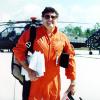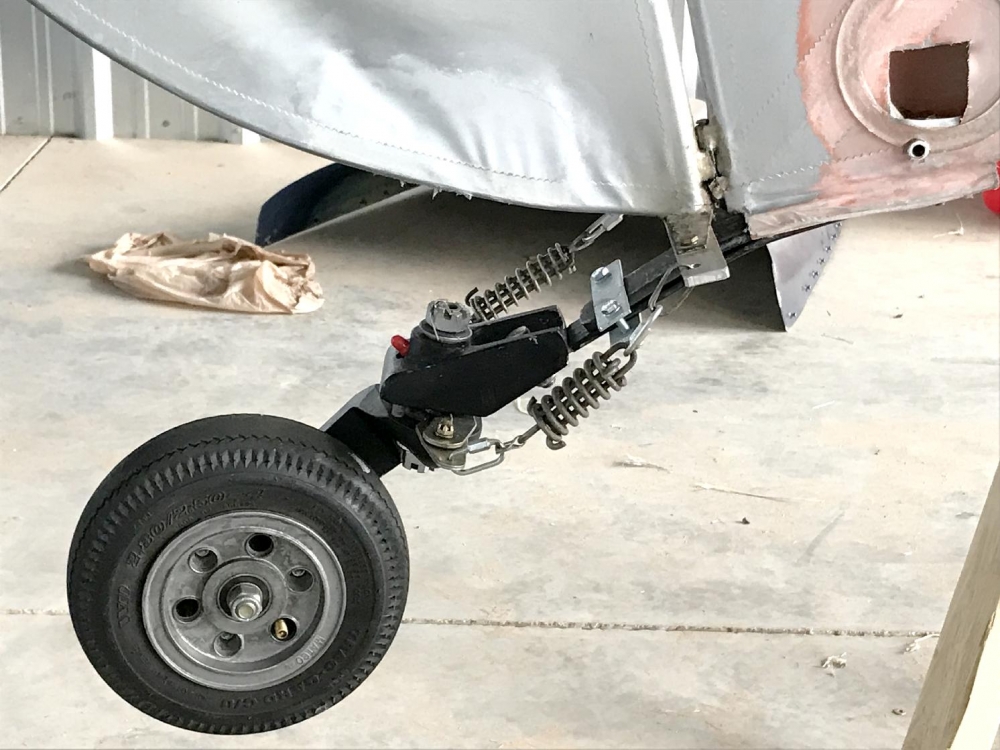-
Content count
688 -
Joined
-
Last visited
Posts posted by nlappos
-
-
Back to the original question - I strongly recommend Rotax Rick. The quality and communication is perfect, price is right, and he is quick.
2 people like this -
About 45 hours total. Great behavior on the engine, lots of power. I pulled off the exhaust Y and looked at the cylinder walls, still shows the original cross hatching and looks great. Starts perfectly. More fuel flow than the 582, I average about 6 gph at 90 mph at 9000 feet. Hacman works well. Very happy with the install.
-
What did the guy who sold you the engine say was the Horsepower of the new engine? Rotax Rick's 670 puts out 91 horse power, and mine shows that for sure.
I think 120 psi is a good compression number, I will check mine and post it when I get home.
-
I know what I need, you do not.
-
Will, that is an older video. After he filmed that one, Trent glued a whole bunch of foam on his leading edge, as he promised, and found it did squat. He ripped it off because it cost him gobs of performance.
Here is the story of his leading edge experiment:
-
Welcome to the gang! You're going to love your Mark IV, it's a great airplane. And this group should be very helpful answering your questions as you are learning about machine. Enjoy!
1 person likes this -
I posted my experience a while back, needed lots of cooling, so I installed the belly radiator in addition to the two nose ones from my 582. Now I fly without concern, 175 degrees in climbout at 7000' and 95 degrees.
Otherwise the 670 is great, I get 500 to 600 fpm at 11000 ft density.
-
Congratulations on making a more effective braking system, but in my humble opinion ground loops are caused by bad rudder action, and brakes are a way to try and fix a problem that was created by the slow feet.
But on the other hand your stick lever looks great, take a look at some of Fred Stork's posts, he installed a dual brake handle system on his airplane so he has differential hand breaks.
1 person likes this -
Seem to be having problems....?
I loved they developed the engine, but a local guy lost his... Started making metal....???
And look on YouTube and you'll see plenty of rod spitting.
NO THANKS!!!
In a subsequent video, the engine failure guy (friend of Trent) owns up to the fact that he built an uprated 912, but he "used an 80 horsepower crank" because he didn't have time to put the higher rated crankshaft into it.
Less a damnation of an engine type than an admission that some experimental guys just screw up. Check out his discussion of the cause of the failure at time 1:20 here: https://youtu.be/j7uMgxXwfmY
2 people like this -
The washout makes the root of the wing stall first, thus preserving roll control as the stall announces itself, since the tips will have nice regular attached flow and the ailerons/flaperons will act normally in that area. My gut feel is that the flaperons will have the same control with or without tip extensions, so leave the washout as it is.
1 person likes this -
The trick is to have the prop that suits the lower rpm. Bigger diameter and fatter blades should do the trick. All the prop companies have the calculator to come up with an ideal prop.
-
Allen, I think you can get off the ground at 5500 rpm (with a 582 set up for 6500 rpm max). You can easily maintain level flight at 5500 rpm or less, so I bet if you hold the aircraft on the ground in a level attitude, tail up, and wait to about 50 mph at 5500 rpm you can unstick and slowly climb.
-
Thanks my bad. .016" would be strong enough. Has a working strength of easily 300 lbs per strip, ultimate of maybe 900 lbs, and your butt is resting on several strips at once. My bad.
That seat would weigh perhaps twice what a high strength ripstop nylon would weigh, but its not out of sight.
OK,. I give in!
-
Guys, aluminum weighs 1.81 oz per cubic inch. 1/16" thick aluminum 1" wide therefore weighs about 4 oz per linear yard. Nylon webbing weighs .71 oz per yard, so aluminum weighs 6 times more than nylon.
Tell me again how light it is.
-
He could have made it heavier, but that would take even more work. Cement, maybe.
2 people like this -
-
Jim, It looks like you have a clamp up at the top of the double spring, seems similar to what I did to help keep the second spring aligned. This might help Willja67, too.
-
The best rule is to judge the verticality of the TW pivot axis, the closer to pure vertical the better, since if the angle is slanted, as the TW turns it has to pick up the airplane's tail a bit, which hampers ground maneuverability. It looks good to me.
I doubled the spring on mine and found it barely fit inside the channel, so I clamped the two springs together to prevent the extra spring from popping out.
1 person likes this -
Depends. Some solenoids actuate the bendix, and some do not. Those that do not and use the starter bendix's inertia to engage it, you could change it as long as it was rated at the same or more amperage.
But the "inertia" comes from the starter as it winds up, so the inertia adds to the electrical load through the starter contacts. Same-same.
2 people like this -
The solenoid's main job is throwing out the gear to engage the flywheel, making the contacts comes along for the ride. That is why the solenoid is so big.
1 person likes this -
1avidflyer, That was a cheap shot. 99.99% of FAA folks are on our side, and virtually all my dealings with them have been great. But that quote was told to me by a friend, a GS-14 FAA specialist!
When I swapped engines, gear and prop, the FSDO guy said just log it into Phase 1, stay within the limits, and log it back out after 5 hours. No inspection, no heartache.
2 people like this -
Is Lowell still doing landing gear?
Yes, Lowell is still in the game, I exchanged emails with him today.
-
Curious why you have to call the FAA inspector.... JImChuk
Jim, I always call the FAA when I need some help. The last inspector explained their philosophy. "We're not happy until you're not happy!":
2 people like this -
I like that paint job! Nice work, Allen.


670 info
in Two Strokes
Posted · Edited by nlappos
here are some photos, AK. I have a Northstar F210 boat fuel flow, which is great!
Typically 8000 ft, 84 mph, 5800 to 6200 rpm, lean with the Hacman, 5.7 to 6.1 GPH